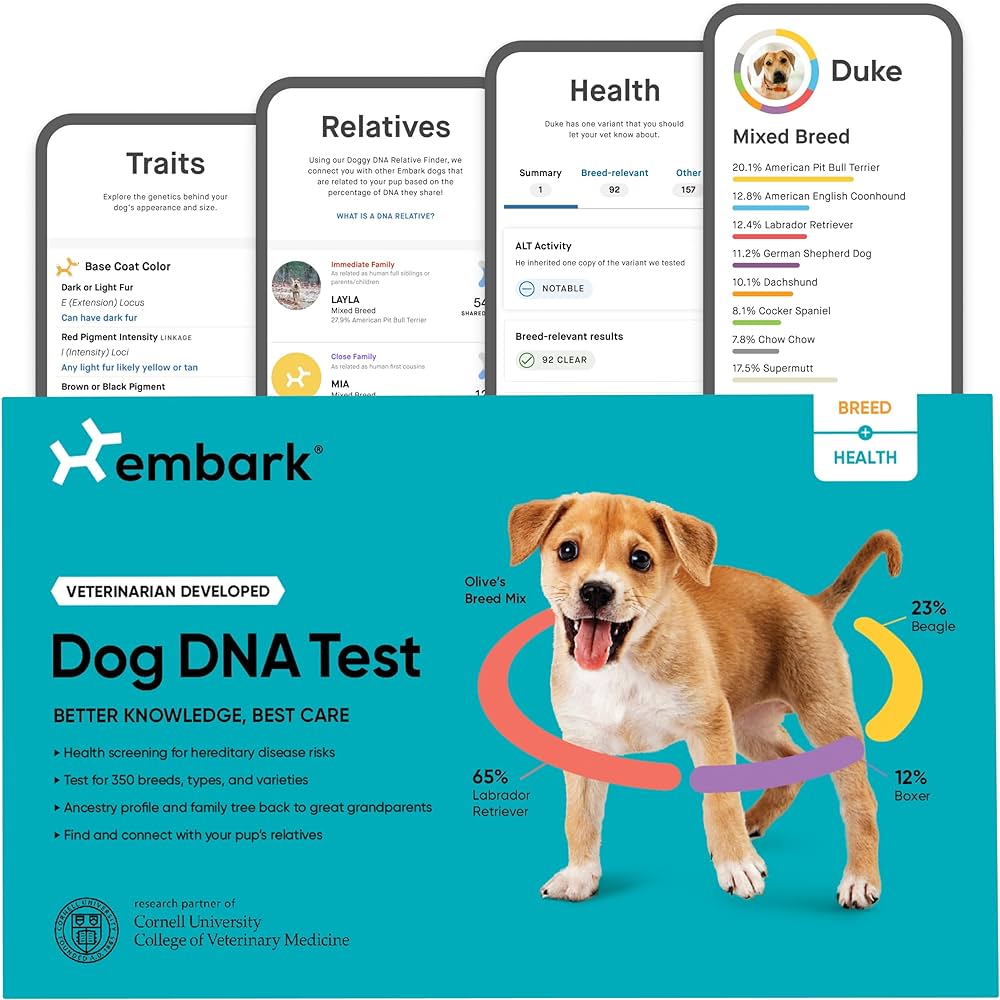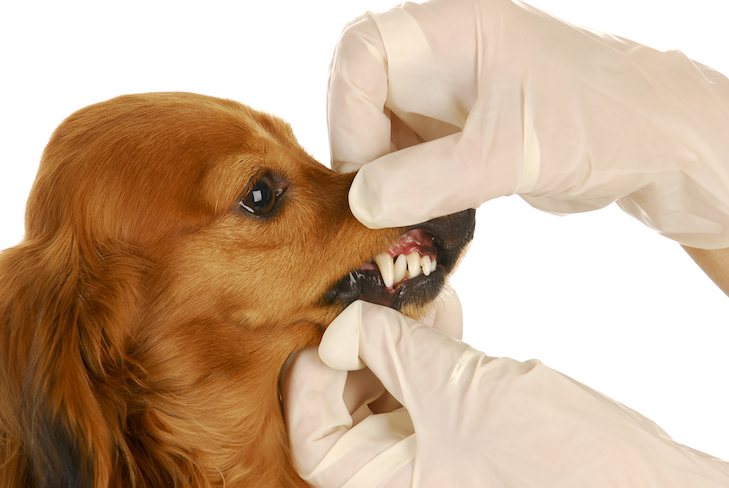What Large Breeds of Dogs Have Dew Claws: Discover Now!
Last Updated on May 8, 2024 by Petpalace54
Great Pyrenees, Briard, Beauceron, and Icelandic Sheepdog are large breeds of dogs that have dew claws on their rear legs. These dew claws may even be considered part of the breed standard in some cases.
We’ll discover here what Large Breeds of Dogs Have Dew Claws. Therefore, Dew claws are essentially vestigial digits and are said to help dogs with gripping and stability. Some breeds, such as Saint Bernards and Spanish Mastiffs, may also have dewclaws on their rear feet. While some breeds may have dew claws on all four legs or double dew claws, these are considered rare.
Yes, removing dew claws is a controversial topic, with some breeders choosing to do so while others opt to leave them intact. Ultimately, it is up to the owner to decide what is best for their dog.

Credit: en.wikipedia.org
Table of Contents
Which Breeds Of Large Dogs Have Dew Claws?
What Large Breeds of Dogs Have Dew Claws? Certain large breeds of dogs such as the Great Pyrenees, Saint Bernard, Beauceron, Briard, Catalan Sheepdog, Estrela Mountain Dog, Norwegian Lundehund, & Icelandic Sheepdog have dew claws, which can even be considered part of their breed standard. Some breeds, like Saint Bernard and Spanish Mastiff, may even have dew claws on their rear feet too.
Which Breeds of Large Dogs Have Dew Claws?
Dew claws are a natural part of a dog’s anatomy, much like our own thumb or big toe. These small, claw-like digits are located on the inside of a dog’s paw, slightly above the ground. While most dogs have dew claws, not all breeds have them on their hind legs. In this blog post, we’ll explore which large breeds of dogs have dew claws and where they can be found on their bodies.
Breeds with Dew Claws on All Four Legs
Some breeds of dogs have dew claws on all four legs, which means they have a total of eight dew claws. These breeds include Great Pyrenees, Briard, Beauceron, and St. Bernard. The presence of dew claws on all four legs is a characteristic of these breeds & is even considered part of their breed standard.
Breeds with Double Dew Claws on Hind Legs
While most breeds have single dew claws on their hind legs, some large breeds, such as Great Pyrenees, Briard, Beauceron, and Icelandic Sheepdog, have double dew claws on their hind legs. Double dew claws are two small, claw-like digits that are located closer to the dog’s body than the single dew claw. These double dew claws can be easily mistaken for an extra toe.
Breeds with Single Dew Claws on Hind Legs
Most large breeds of dogs have a single dew claw on each hind leg, with the exception of a few such as the Spanish Mastiff and the Norwegian Lundehund. Pitbulls can also have dew claws, but they may be removed.
In conclusion, dew claws are an essential part of a dog’s anatomy. Some large breeds have dew claws on both their front and back legs, while others only have them on their front legs or hind legs. These dew claws can be single or double, and depending on the breed, they can even be considered part of the breed standard.

Credit: www.reddit.com
Should Dew Claws Be Removed?
Some large breeds of dogs that are known for having dew claws include the Great Pyrenees, Saint Bernard, Beauceron, Briard, Catalan Sheepdog, Estrela Mountain Dog, Norwegian Lundehund, and Icelandic Sheepdog. In fact, depending on the breed, the double dewclaw may even be considered part of their breed standard.
It’s important to note that whether or not to remove dew claws is a personal choice and should be discussed with a veterinarian.
Dewclaws are essentially the dog equivalent of thumbs, located on the inside of their front and hind legs. Certain breeds, such as the Great Pyrenees, Briard, Beauceron, and Icelandic Sheepdog, are known for having these rear double dewclaws. Depending on the breed, the double dewclaw may even be considered part of the breed standard. However, some dog owners choose to have them removed. The decision to remove dewclaws or not can be a controversial one. Here are some arguments for and against this practice.
Arguments For Removing Dew Claws
- Prevent injury: If a dog’s dewclaw gets caught on something, it can easily rip or tear, causing pain and potential infection. By removing them, you eliminate this possibility.
- Cleanliness: If a dog’s dewclaws are not properly maintained, they can accumulate dirt & debris, leading to infection.
- Appearance: Some dog owners believe their pet looks better without dewclaws, particularly if they are double dewclaws on the hind legs.
Arguments Against Removing Dew Claws
- Functionality: Dewclaws may play a role in a dog’s balance & stability, particularly when running and turning quickly.
- Pain: Removing dewclaws can be a painful procedure, particularly in older dogs. It requires anesthesia & proper aftercare.
- Natural: Dewclaws are a normal part of a dog’s anatomy & removing them can be considered unnecessary and unnatural.
Ultimately, the decision to remove dewclaws should be made on a case-by-case basis, taking into account the dog’s breed, individual needs, & potential risks and benefits. If considering dewclaw removal, consult with a veterinarian to ensure all necessary precautions are taken to minimize pain and risk of complications.
How To Take Care Of Your Dog’s Dew Claws
Breeds such as Great Pyrenees, Saint Bernard, Beauceron, Briard, Catalan Sheepdog, Estrela Mountain Dog, Norwegian Lundehund, & Icelandic Sheepdog are known for having dew claws on their rear legs. Some breeds even have double dew claws, which are considered part of their breed standard.
Taking care of your dog’s dew claws is important to keep them healthy and avoid complications.
Dewclaws are non-functional digits that some breeds of dogs have on their front and/or hind legs. In large breeds, dewclaws are often found on the hind legs as well. Double dewclaws, meaning 2 dewclaws on the same paw, are common in a few breeds, such as the Great Pyrenees, Briard, Beauceron, & Icelandic Sheepdog. Some breeds, like Saint Bernards and Spanish Mastiffs, have dewclaws on their rear feet also.
Keeping Dew Claws Clean
Regular cleaning of dewclaws is necessary to keep them healthy and prevent infections. To clean your dog’s dewclaws, use warm water & a damp cloth to gently wipe the area around the dewclaw. If there is an accumulation of dirt or bacteria, add a small amount of mild soap to the water. Rinse the area thoroughly with clean water & dry it completely. Never use alcohol or antiseptics, as they can be harmful to your dog’s skin.
Trimming Dew Claws
Dewclaws that are left untrimmed can grow too long and curl around, causing discomfort & even digging into your dog’s skin. Trimming dewclaws regularly is essential to prevent this problem. Use a pair of pet nail clippers to trim the dewclaw, making sure not to cut too close to the base. If you are unsure about how to trim your dog’s dewclaw, seek guidance from a professional dog groomer or a veterinarian.
In conclusion, taking care of your dog’s dewclaws is crucial to their well-being. Keep them clean and well-trimmed to prevent infections and discomfort. With proper maintenance, your dog’s dewclaws can be healthy & pain-free for their lifetime.

Credit: www.amazon.com
Frequently Asked Questions Of What Large Breeds Of Dogs Have Dew Claws
What Dog Breed Has Dew Claws?
Some dog breeds with dewclaws are Great Pyrenees, Briard, Beauceron, and Icelandic Sheepdog, which have rear double dewclaws. Some breeds, such as Saint Bernards and Spanish Mastiffs, also have them on their rear feet. Dewclaws may be removed if necessary.
Do Great Pyrenees Have Dew Claws?
Yes, Great Pyrenees have dew claws. In fact, they have double dew claws, which can be found at the rear of their legs. Other breeds that also have dew claws include Beauceron, Briard, & Icelandic Sheepdogs. Some breeds even have dew claws on all four legs.
Do Mastiffs Have Dewclaws?
Yes, mastiffs can have dewclaws on their hind legs, along with certain breeds such as Saint Bernards, Icelandic Sheepdogs, and Spanish Mastiffs. Some breeds like the Great Pyrenees, Briard, and Beauceron also have rear double dewclaws which are considered part of the breed standard.
Do Pitbulls Have Dew Claws?
Yes, some breeds of pit bulls do have dew claws. However, it depends on the individual dog, and some owners may choose to have them removed.
Conclusion
Hopefully, you already Discovered What Large Breeds of Dogs Have Dew Claws. Certain breeds of dogs have dew claws, including some large breeds like the Great Pyrenees, Beauceron, and Saint Bernard. Some of these breeds even have double dewclaws, which are considered part of their breed standard. While some prefer to remove dew claws, they can serve a purpose in aiding a dog’s stability & balance.
Finally, understanding the unique traits of different breeds can ultimately help owners provide the best care for their furry friends.


